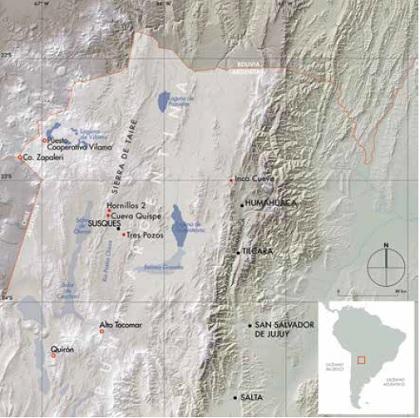Patricia Solá, Hugo D. Yacobaccio, Mariana Rosenbusch, María Susana Alonso, Marta S. Maier, Cristina Vázquez & María Paz Catá
2 013
Boletín del Museo Chileno de Arte Precolombino Vol. 18, N° 1, 2013, pp. 67-83, Santiago de Chile
El análisis de pinturas rojas en pictografías de tres sitios de la Puna jujeña puso de manifiesto el uso exclusivo de hematita en su realización. Este pigmento rojo fue utilizado en la región desde inicios de la ocupación humana y su reiterada presencia en representaciones pictóricas diacrónicas revela la especificidad de esa materia prima en Hornillos 2, Cueva Quispe y Tres Pozos. Los pigmentos rojizos recuperados de los niveles estratigráficos en dos de los sitios están constituidos por hematita y por arcillas rojas. El uso de uno u otro tipo de pigmento estaría relacionado con las propiedades intrínsecas de ambas especies minerales, por tal motivo, planteamos que fueron utilizadas con fines diferentes.
Physical-chemical characterization of red paints from pictographs found at three sites in the Puna of Jujuy shows that hematite was the only pigment used in their execution. Hematite pigment was used in the region from the earliest human occupations and its recurring presence in diachronic rock paintings reveals the specificity of this material in Hornillos 2, Cueva Quispe and Tres Pozos. In addition to hematite, reddish pigments recovered from stratigraphic levels include clay pigments. As the use of one kind of pigment over another would be linked to its intrinsic properties, we propose that these different pigments were used for different purposes.
http://igeba.gl.fcen.uba.ar/Files/Publicaciones/Publicacion-Alonso-Hematita.pdf

